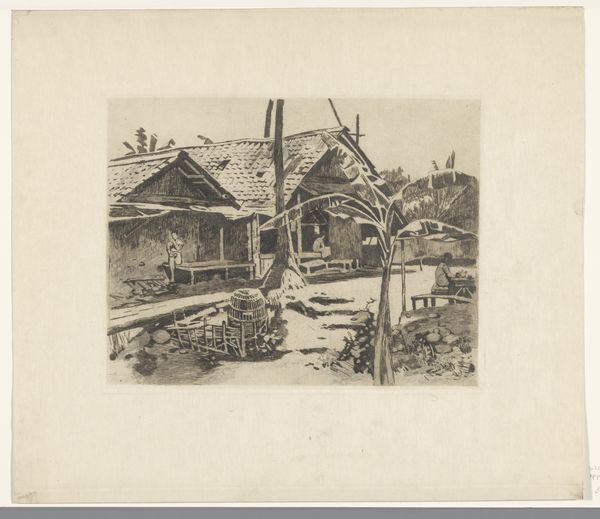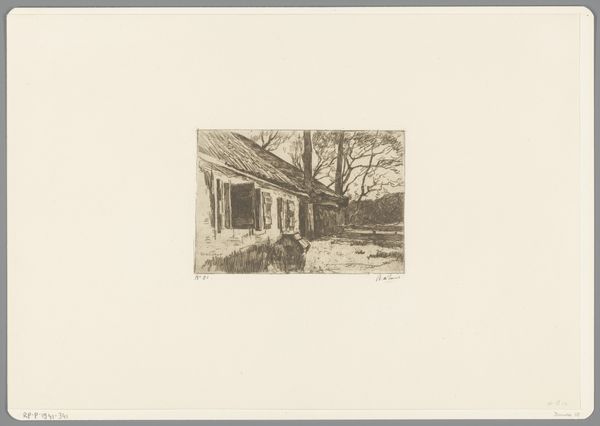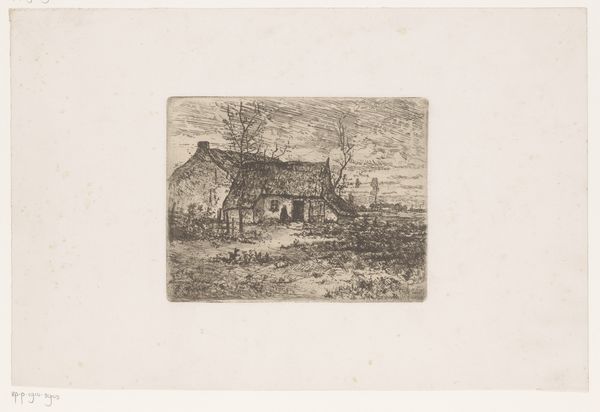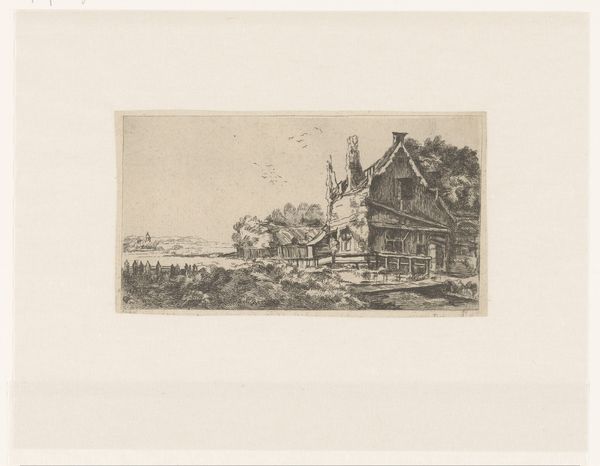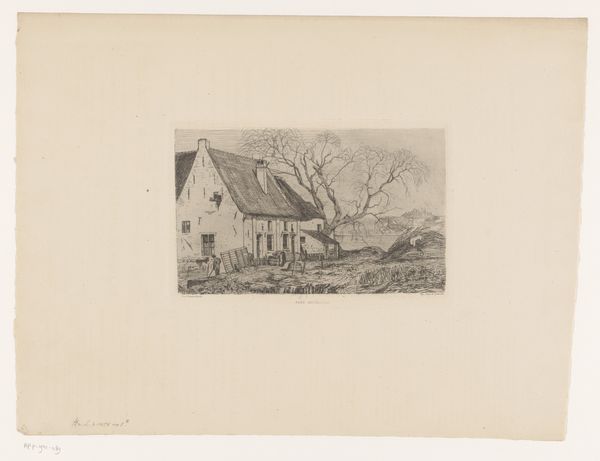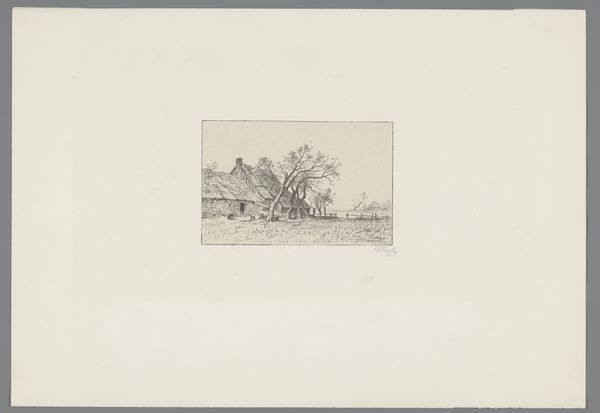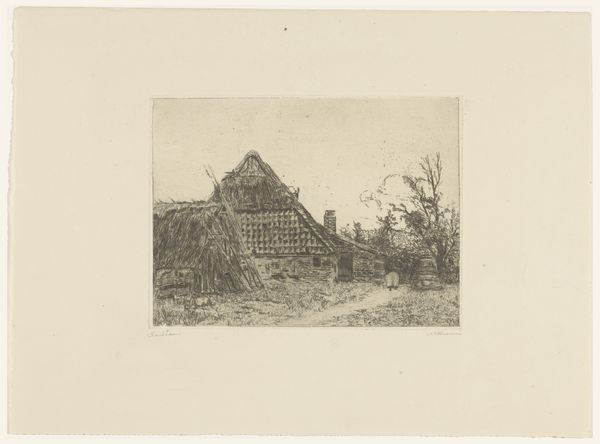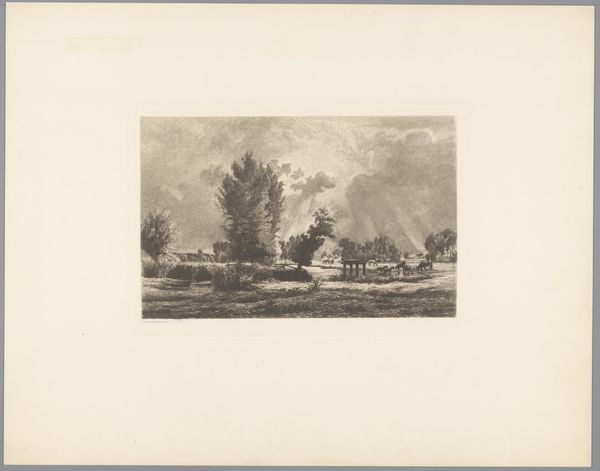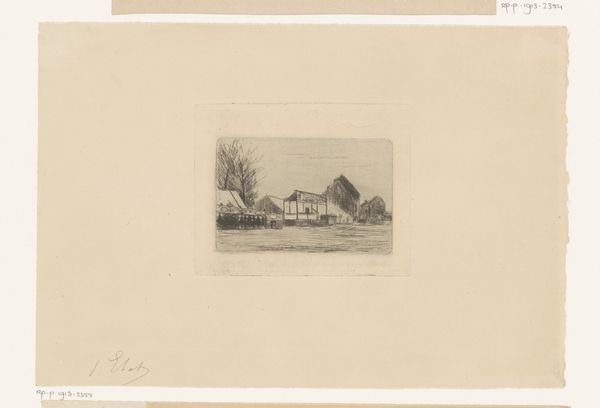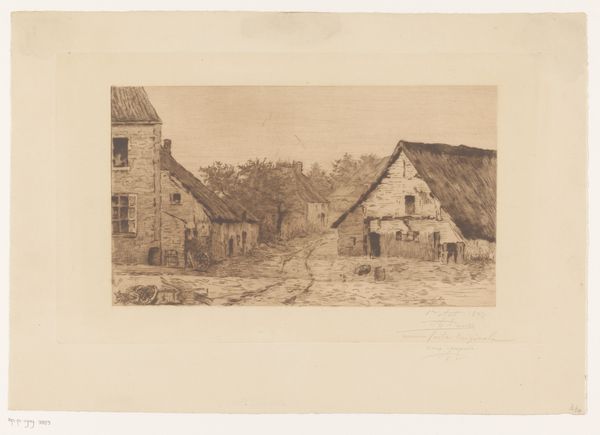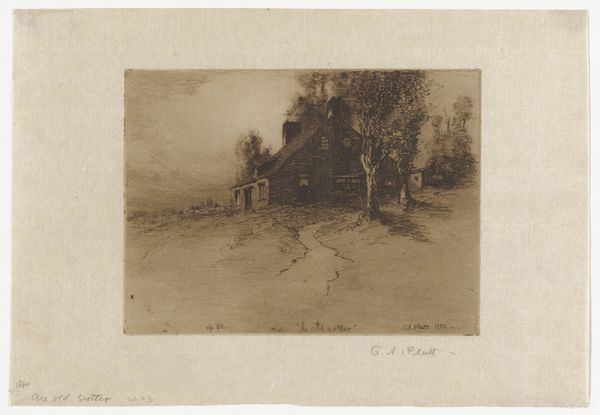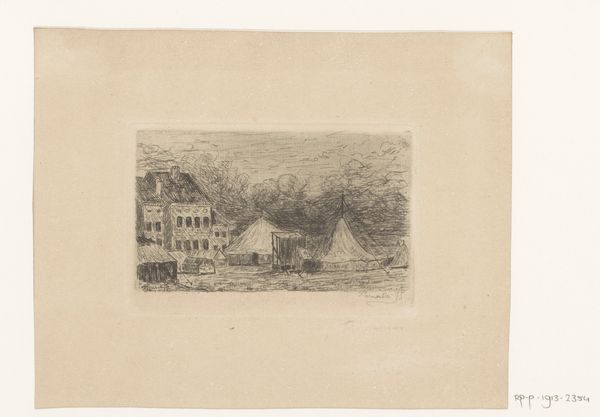
drawing, print, etching
#
drawing
#
dutch-golden-age
# print
#
etching
#
landscape
#
monochrome
Dimensions: height 124 mm, width 181 mm
Copyright: Rijks Museum: Open Domain
Curator: "Farmhouse with Telegraph Pole," created around 1896 by Willem de Zwart. It's a monochromatic print, specifically an etching, depicting a rural landscape. Editor: The immediate impression I get is one of isolation, even starkness. The composition is dominated by the farmhouse itself, its texture meticulously rendered, but everything else feels…receding. Curator: Interesting observation, especially given the period. Etchings like this were quite popular amongst a rising urban middle class who often romanticized the countryside and a slower pace of life, before industrialization fully transformed the Dutch landscape. Editor: Right, there’s a dialectic at play between romanticism and… intrusion. Look at how the titular telegraph pole disrupts the scene. It's a severe vertical line cutting through what might otherwise be an idealized pastoral view. It seems almost discordant. Curator: Precisely! De Zwart highlights the evolving relationship between technology and nature. The telegraph pole symbolizes connectivity, progress, and the reach of centralized power, impacting even remote areas. Editor: Formally, it functions as a critical point of visual tension. Our eyes are drawn to it, and then forced back to the detailed articulation of the farmhouse. I’m fascinated by how he varies the etching technique, achieving remarkable textural contrasts. Curator: And what that detail tells us! This farmhouse isn't just a generic dwelling. It is solid and constructed with careful brick and stone work, suggesting it represents a specific social and economic context within the rural Netherlands at the turn of the century. The presence of this style of housing alongside emerging technologies hints at wider structural change. Editor: Indeed. Beyond its historical weight, what I am personally struck by is De Zwart's economy of line. The subtle tonal gradations he coaxes from the medium creates an effect of muted, almost melancholy beauty. Curator: Yes, he captured a crucial moment in Dutch history. We can really consider the artwork to have an intriguing point about change. Editor: Absolutely. There's a haunting quality here, a premonition almost, about the impact of modernization that I cannot deny.
Comments
No comments
Be the first to comment and join the conversation on the ultimate creative platform.


